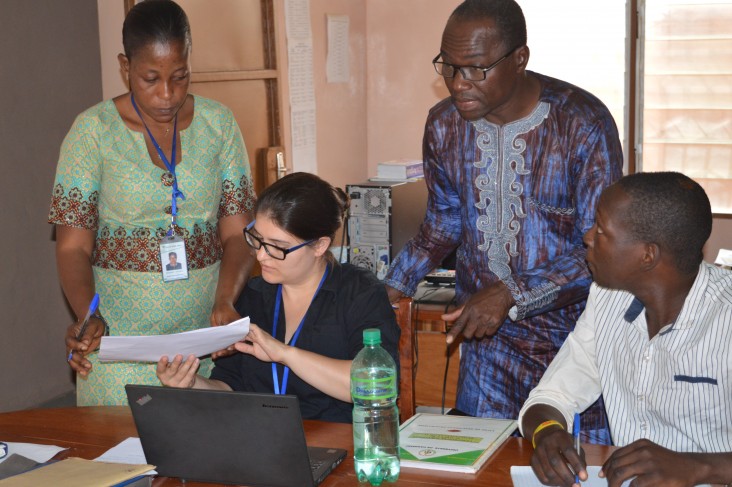
March 2016—While news headlines in the recent past have been dominated by the Ebola crisis in West Africa, many people may not be aware of another virus in the region that can cause serious illness and even death—Lassa fever.
A hemorrhagic fever, Lassa is an animal-borne virus that, like Ebola, can be spread from person to person by blood, tissue, secretions or excretions of a Lassa virus-infected individual.
As witnessed in the Ebola outbreak in West Africa, such viral hemorrhagic fevers present serious challenges for health systems around the world. While the small country of Benin, situated next to Nigeria, has been lucky enough to escape the scourge of Ebola, it is now grappling with Lassa fever outbreaks that present similar challenges.
The symptoms of Lassa are nearly identical to Ebola—fever and vomiting with extreme dysfunction in the body’s network of blood vessels, which can result in profuse bleeding. Not everyone who catches it becomes seriously ill, but fatality rates have been known to be as high as those during Ebola outbreaks. Lassa is less easily transmitted than Ebola, but nonetheless patients must still be treated in complete isolation.
Lassa outbreaks are caused by rats, which carry the disease into homes and food stores, especially in the dry season from November to April. Once infected, Lassa can spread from person to person. While outbreaks are not unusual in West Africa, and in particular in neighboring Nigeria, imported cases into Benin are relatively new with the first known, small outbreak occurring in late 2014.
In the first few months of 2016 alone, 47 cases of Lassa fever were reported in Benin, with 24 deaths. All of these cases are believed to have been transmitted through person-to-person contact.
All too aware of the dangers of a slow response to such an outbreak, actors on the ground launched a quick response. USAID’s partner in Benin, NGO SIAN’SON, implements USAID’s community health program called Paquet d’Intervention a Haut niveau d’Impact (High Impact Interventions Package). The organization is based in the Borgou department of Benin, one of the hardest hit by the recent Lassa fever outbreak.
The program's integrated approach includes interventions in the control and treatment of malaria, improved practices for maternal and child survival, family planning, and HIV/AIDS prevention. The program, which began in October 2014, now focuses on expanding the reach of health interventions at the community level, preparing them to mount an effective response to Lassa fever.
When the outbreak first occurred in Borgou in January, SIAN’SON immediately sought answers to questions like: How are we going to keep community health workers safe so they can continue their work? What do community health workers need to know? What does the community need to know?
"Our concern, once we heard about Lassa fever cases, was, as the community health workers are in the field dealing with sick people, how do we keep them safe while continuing to save the lives of children under 5 years old?” said Halima Coulibary, SIAN’SON's managing director.
With the help of Peace Corps volunteer Crystal Grippin, who has a Master's in public health in parasitology, SIAN’SON developed clear, effective messages on Lassa fever and the precautions that community health workers need to take to stay safe. The NGO collaborated with USAID's Ebola preparedness partner, the University Research Co., to train 185 community health workers on appropriate responses to Lassa fever. The NGO also distributed flyers, broadcast messages on Parakou's Radio Deeman in local languages Nago and Bariba, and held meetings with village chiefs, traditional healers and religious leaders.
Officials asked SIAN’SON-trained community health workers to assist them with the vital task of tracing and monitoring transmission of the virus. And the Benin Ministry of Health requested that SIAN’SON share their approach so it could be passed along to other community health workers across the country.
While challenges still exist in responding to and containing outbreaks of hemorrhagic fevers in Benin, the country is better prepared now than when it last faced a Lassa fever outbreak in late 2014. Thanks to USAID and its partners like SIAN’SON and the University Research Co., the most recent outbreak saw more effective messaging and communication, and a more organized approach to mobilizing resources.
USAID plans to use SIAN’SON’s model to train other community health workers throughout the country. Moving forward, USAID will also strengthen national supply chain management for Ebola and other viral hemorrhagic fever outbreak commodities, improve border control, and strengthen the referral system from communities and private clinics. These investments will continue to strengthen Benin’s ability to respond to future outbreaks, and to prevent such outbreaks from spiraling out of control.
LINKS
Follow @USEmbassyBenin







Comment
Make a general inquiry or suggest an improvement.